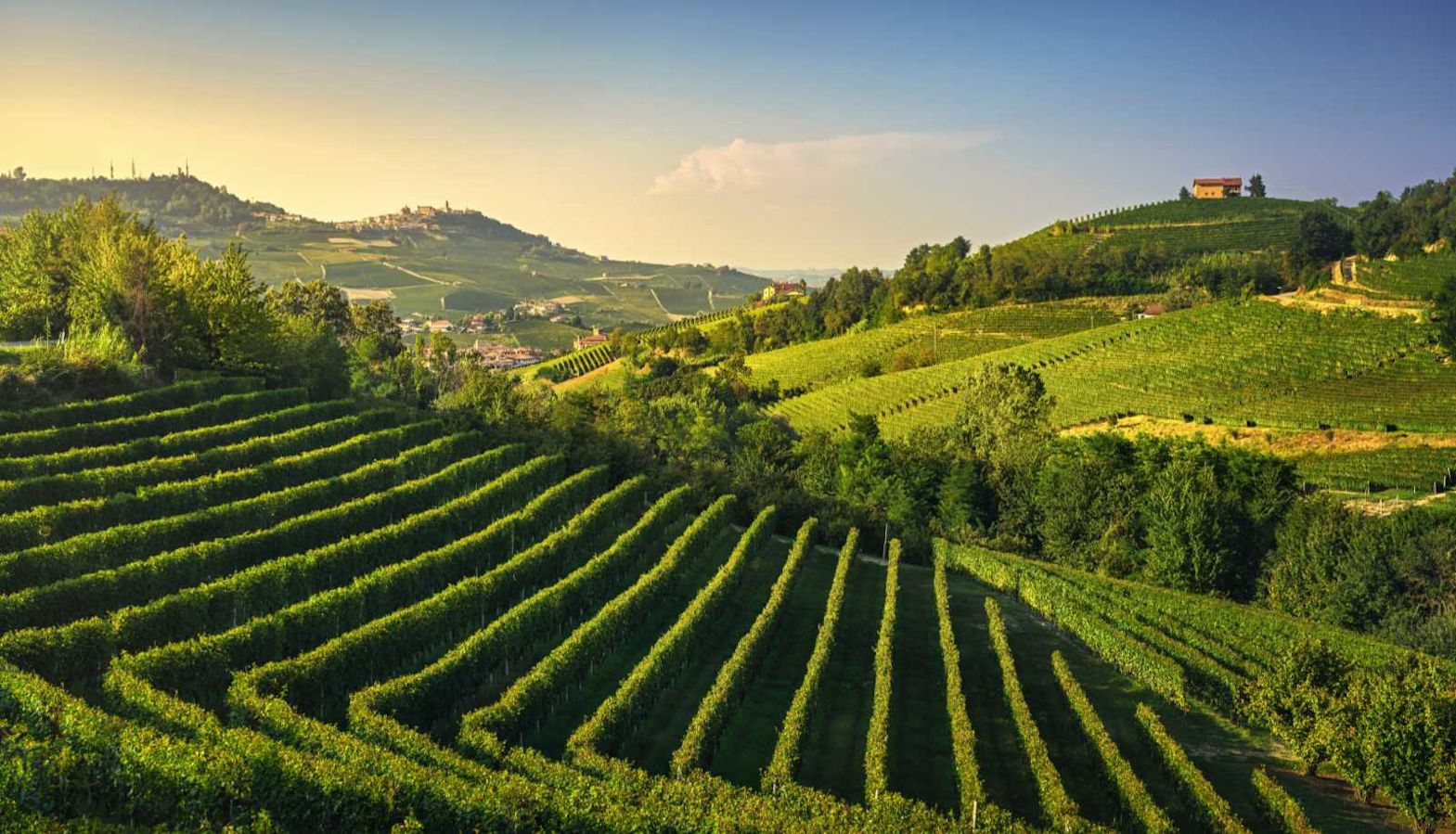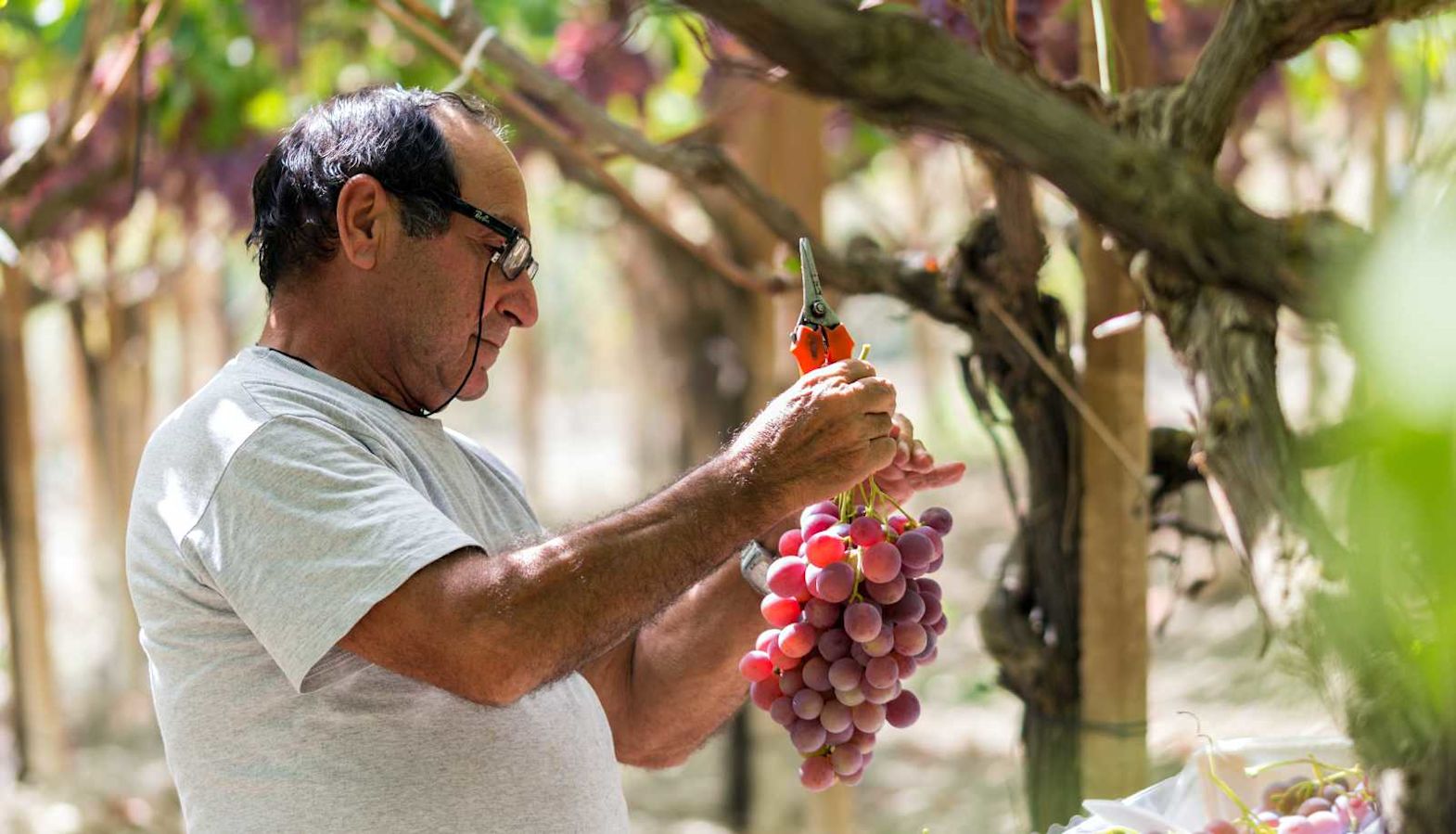Chat with Vinny
Known as ‘the land of the vine,’ Italy is home to a diverse and wonderful range of wine regions. Start your journey of discovery into Italian wine regions today with our handy guide.
Wine is a big part of Italian culture. Not only is Italy the world’s largest wine producer, it’s home to 500 native grape varieties grown across 20 Italian wine regions. These regions’ diverse landscapes and climates help produce some of the world’s favourite wines.
Wine has been made and consumed in Italy as far back as 4,000 BC, and winemaking became an established practice by 800 BC following the arrival of Greek settlers. With such a rich winemaking history, Italy has perfected the art of grape growing, with each wine region drawing on a legacy of techniques and processes. Our guide focuses on the eight best-known vine-growing areas. So, if you’re fascinated by Italian wine regions, read on.
Italian wine regions to discover
Abruzzo
In the middle of Italy is Abruzzo, a mountainous wine region with a long winemaking history. One of Italy’s largest wine-producing areas, Abruzzo is home to the Montepulciano grape (not to be confused with the Tuscan region of the same name).
The majority of the Montepulciano planted in Abruzzo is used to produce Montepulciano d’Abruzzo DOC, the region-wide denomination for red wines made from the grape. These reds are known for their inky colour, silky tannins and smooth plummy fruit flavours, plus hints of pepper and tobacco. Meanwhile, Cerasuolo d’Abruzzo DOC is the denomination for the region’s deep-coloured rosés made from the same variety, and Trebbiano is the main white grape of the region, typically making Trebbiano d’Abruzzo DOC wines.

Emilia-Romagna
The northern Italian region of Emilia-Romagna is considered Italy’s food capital and is home to Italian staples such as Parmigiano Reggiano, Parma ham and Modena balsamic vinegar. It is also home to the often-forgotten Italian classic of Lambrusco.
This sparkling red wine has been out of favour for the last 20+ years, but its star is rising again as winemakers look to make ever-more elegant wines using native grapes such as Sorbara, Maestri, Salamino and Grasparossa. These give the sparkling wine its characteristic cherry, blueberry, rhubarb and watermelon aromas. Made in both dry or semi-sweet styles and almost always in the semi-sparkling ‘frizzante’ style, Lambrusco’s light and easy-going nature makes it a perfect pairing for a diverse array of foods, from creamy pasta dishes to grilled meats and seafood.
Aside from sparkling reds, the region’s rich alluvial soils allow Sangiovese, Malvasia, Trebbiano and Barbera vines to flourish, producing an impressive array of reds and white wines.
Piedmont
Revered for its white truffles, hazelnuts and complex, long-lived red wines, this Italian wine region sits at the foot of the Alps in northwestern Italy. Combining the ice-cold influence of the Alps and the warming presence of the Mediterranean, Piedmont’s climate is perfect for growing red Nebbiolo grapes. These form the backbone of the region’s most famous wines – Barolo and Barbaresco – the best of which are considered among the finest reds in the world and can age for decades.
If you’re looking for easy-drinking, lighter reds, get to know Piedmont’s other grape varieties, Barbera and Dolcetto. White wines from Piedmont grapes are also renowned. The local Cortese grape produces the crisp, herbal, lime-scented wines of the Gavi DOCG, while the straw-coloured Roero Arneis is a richer, dry white with hints of creamy peach and almond. Piedmont is also home to one of Italy’s most popular white wines – the sweet, lightly sparkling Moscato d’Asti that works perfectly as an aperitif or with desserts.

Puglia
Located in the ‘heel’ of Italy’s ‘boot’, Puglia is famous for its bounty of seasonal fruits and vegetables and its historical, conical-roofed Trulli huts.
Its red wines, in particular, are also gaining a reputation worldwide thanks to their intense, weighty black fruit and spice character, and for offering good value for money. Blessed with hours of sunshine, Puglia produces red wines that are rich, robust and full of ripe flavours. The two most popular grape varieties here are Primitivo and Negroamaro.
Puglian Primitivos are bold, full-bodied reds boasting notes of blueberries, blackberries, liquorice and black pepper – sometimes with hints of chocolate and spice from being aged in American oak. The key to Negromaro’s character is in the name, meaning ‘black’ and ‘bitter’ in Italian. These wines have notes of ripe black fruit, cloves, coffee and cinnamon.
For a bold red full of spicy black fruit and oaky richness, try our number one pick from Puglia – Pillastro Primitivo 2022.
Sicily
One of Italy’s most exciting winemaking regions, Sicily has a warm climate thanks to seemingly endless sunshine, along with cooling coastal breezes. This makes it perfect for grape growing, and local winemakers are fast gaining a reputation for their high-quality reds and whites. Sicily’s most widely planted red grape variety is Nero d’Avola, which produces weighty red wines with smooth tannins and dark cherry, plum and liquorice spice flavours.
The local Frappato grape is more easy-going and generally makes light-bodied, strawberry-scented wines. Nerello Mascalese is a rare, much-prized, red grape that thrives in the volcanic soils around Etna and produces light to medium-bodied red wines reminiscent of fine Pinot Noir. But if white wine is more your thing, look for wines with peachy notes made from Grillo and or the rare Carricante grape, at its best grown in the volcanic soils around Mount Etna. Sicily is also home to the iconic fortified wine Marsala, made in dry and sweet styles on the island’s western side.

Trentino-Alto Adige
At the very north of Italy is the wine region of Trentino-Alto Adige, where you’ll find an incredible mix of Italian and Austro-Hungarian influences.
Alto Adige claims Europe’s highest vineyards, sitting at 1,100 metres. A clutch of cool-climate-loving grape varieties have found a happy home in this sunny, high-elevation region. Grapes grown at such lofty altitudes retain aroma and freshness, resulting in light-bodied, ruby reds made from Pinot Nero (aka Pinot Noir) and Schiava grapes in particular. These wines will charm you with cherry, wild strawberry, raspberry and violet flavours.
Pinot Grigio reigns supreme on the white front, and locally grown Chardonnay is widely used in producing Trento DOC sparkling wines. International grapes are also found in this German-speaking region, which benefits from less stringent DOC rules than the rest of Italy’s wine regions.
Shop now for Italian reds, whites, rosés and sparkling wines.
Tuscany
One of the best-known Italian wine regions, Tuscany is home to gently rolling hills, soaring cypress trees and over 70,000 hectares of Sangiovese vines – the most famous red wine grape variety in Italy. Located southwest of Emilia-Romagna, this region benefits from the cooling influence of the Tyrrhenian Sea. The birthplace of the Renaissance is also the cradle of some of the finest wines in the country, including Sangiovese-dominated reds Chianti Classico, Vino Nobile di Montepulciano and Brunello di Montalcino.
The Chianti sub-region stretches south of Florence and includes the Chianti Classico DOCG, nestled in the mountains between Florence and Siena. These wines are characterised by their sour cherry flavours and notes of herb and spice. Wines that don’t conform to traditional production rules are labelled as Toscana IGT, Super Tuscans, which can be made entirely from Sangiovese or include international grapes like Cabernet Sauvignon in the blend.

Veneto
The Veneto is the birthplace of some of Italy’s most famous wines, including Prosecco and Amarone – wines at very different ends of the taste spectrum!
This region boasts the Alps in the north and Lake Garda to the west, the cool microclimate perfect for growing a variety of crisp and fresh white wine grapes. The Veneto is Italy’s most prolific region, with Prosecco accounting for a large chunk of its annual production. This sparkling wine is popular around the globe due to its easy-drinking style, juicy pear aromas and wallet-friendly prices. The best Proseccos hail from the hillside vineyards of the Conegliano Valdobbiadene and Cartizze DOCGs.
The region’s top red is Valpolicella, made in various styles from light, juicy and fresh, to the more intense Valpolicella Ripasso, to the darkest and weightiest – Amarone della Valpolicella. They are all made predominantly from the native grapes Corvina and Rondinella. ‘Standard’ Valpolicella is a vibrant red with sour cherry notes; Ripasso uses a portion of semi-dried grapes in the fermentation, so its flavours are more intense, while Amarone and its sweet version Recioto di Amarone are loved for its richness and power (often with ABVs of up to 16 degrees), which stems from drying the grapes before fermentation.
About the author
Ben Hutchings
Writing has always been Ben’s biggest passion. Then back in 2017, he became a copywriter for Laithwaites and discovered another great love … for wine. He immediately started learning all he could and is now qualified to WSET Level 3. But it was the stories behind the wines that really resonated with Ben, and he loves nothing more than sharing them with anyone who will listen. Top wine: crisp, dry, German Riesling.


